CVC Insertion – Assistance
CV catheters are essential in treating several conditions and prove useful in obtaining information like right ventricular preload, cardiovascular status and fluid balance in patients.
This Central Venous Catheter Insertion – Assistance VR simulation from MedVR Education is designed for nurses to provide practice and training in assisting physicians with the insertion procedure – right from preparing the patient and instruments, cleaning the insertion site, monitoring of the patient during the procedure to performing post-insertion activities.
- Preparing the single transducer hemodynamic pressure monitor system for CVC insertion
- Demonstrating proper positioning of the patient in Trendelenburg position
- Using standard techniques for cleansing CVC insertion site
- Assessing patient during and after insertion of CVC catheter
- Flushing lumens and connecting the catheter to the hemodynamic pressure monitoring system
- Labeling of all tubing and observing external centimeter marking of catheter
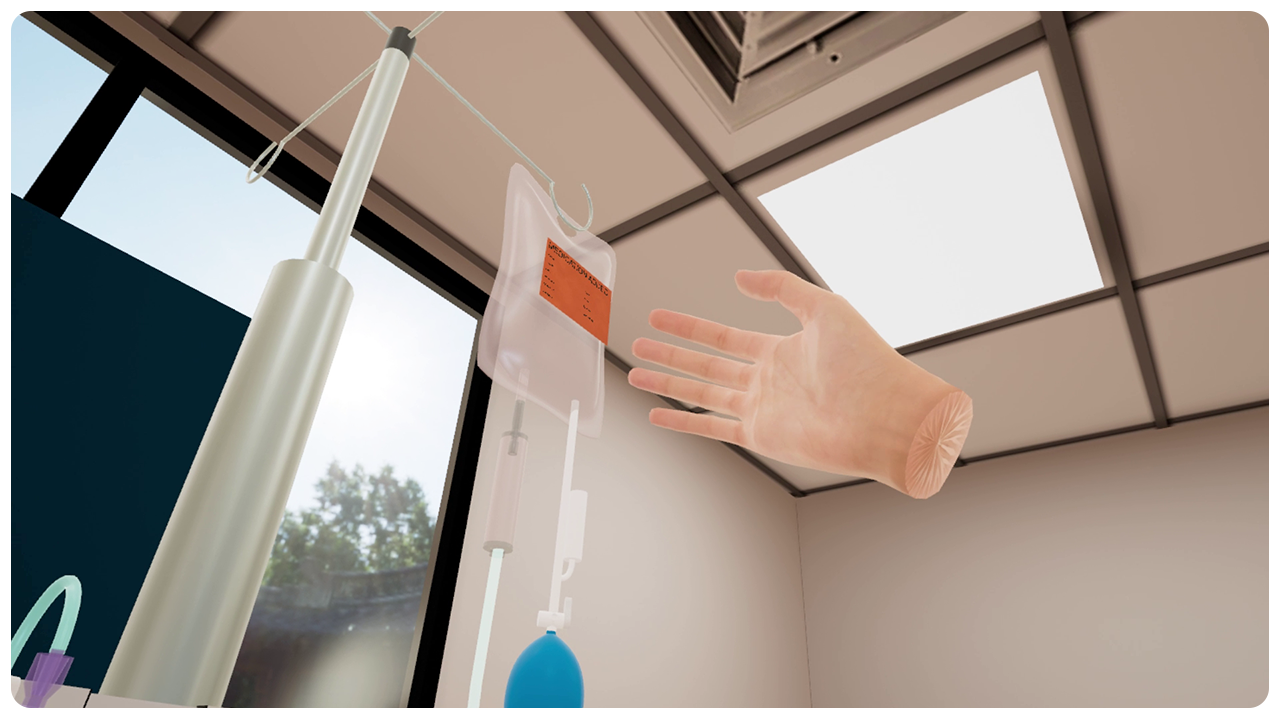
Adapted from Wiegand, D.L. (Ed.). (2017). AACN procedure manual for high acuity, progressive, and critical care (7th ed.). St. Louis: Elsevier.
Customize Your Program
Get rid of the editor. Adopt in-VR customization.
MedVR Education is bringing to you in-VR customization that will enable you to customize your procedural simulations by making selections from a range of feature choices.
- Select patient from a diverse background
- Choose preferred virtual environment
- Select equipment used in the procedure
- Modify difficulty level of the assessment mode
- …..many more to come
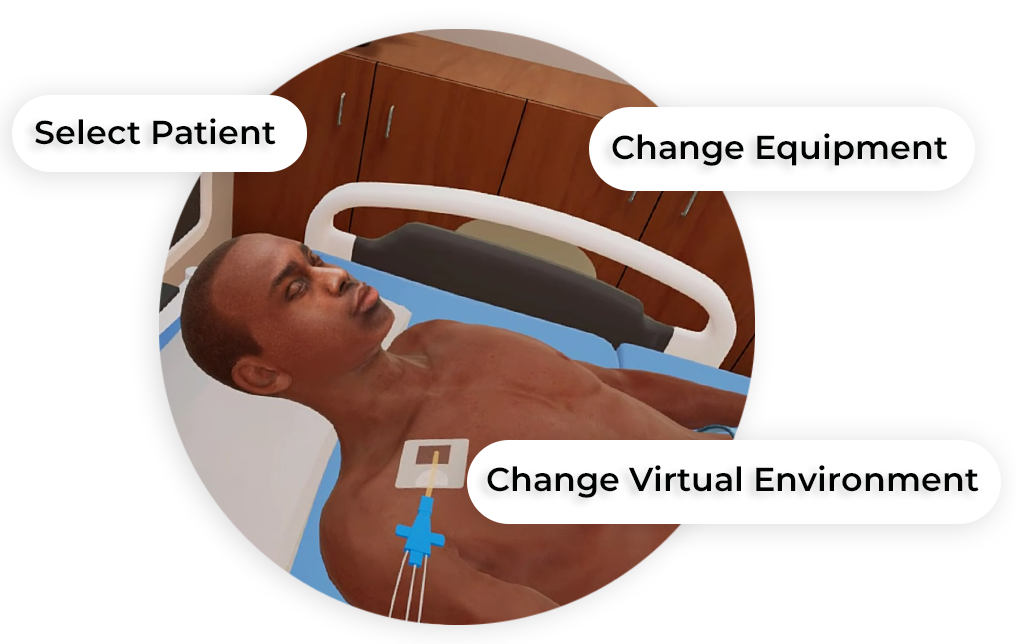
Core Skills Training
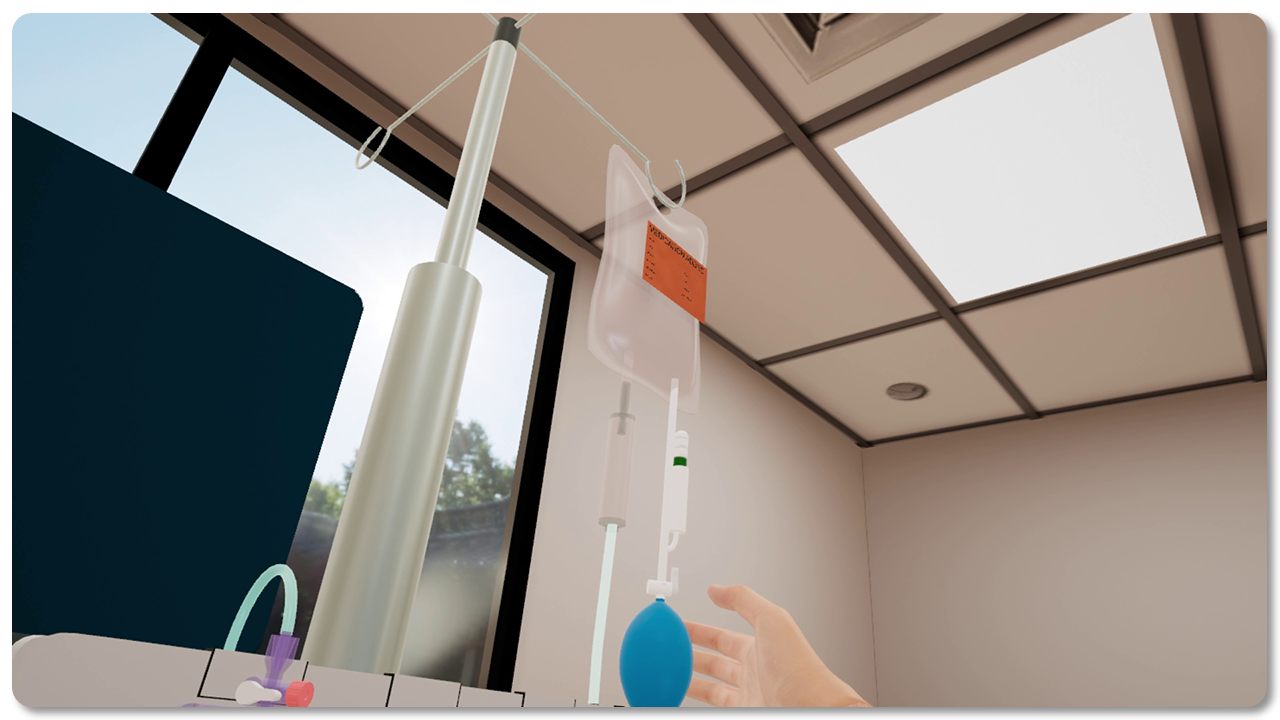
Preparing Pressure Monitoring System
Before the practitioner performs the insertion, preparations need to be made for the procedure. This module is designed to perform and practice pre-insertion activities like preparing the single transducer hemodynamic pressure monitoring system, performing hygiene routines and verifying the availability of all required items. Since this procedure involves a subclavian insertion, we will also practice positioning the patient in a Trendelenburg position. With adequate affordances and appropriate feedback, learners can understand the process and correct their mistakes, if any.
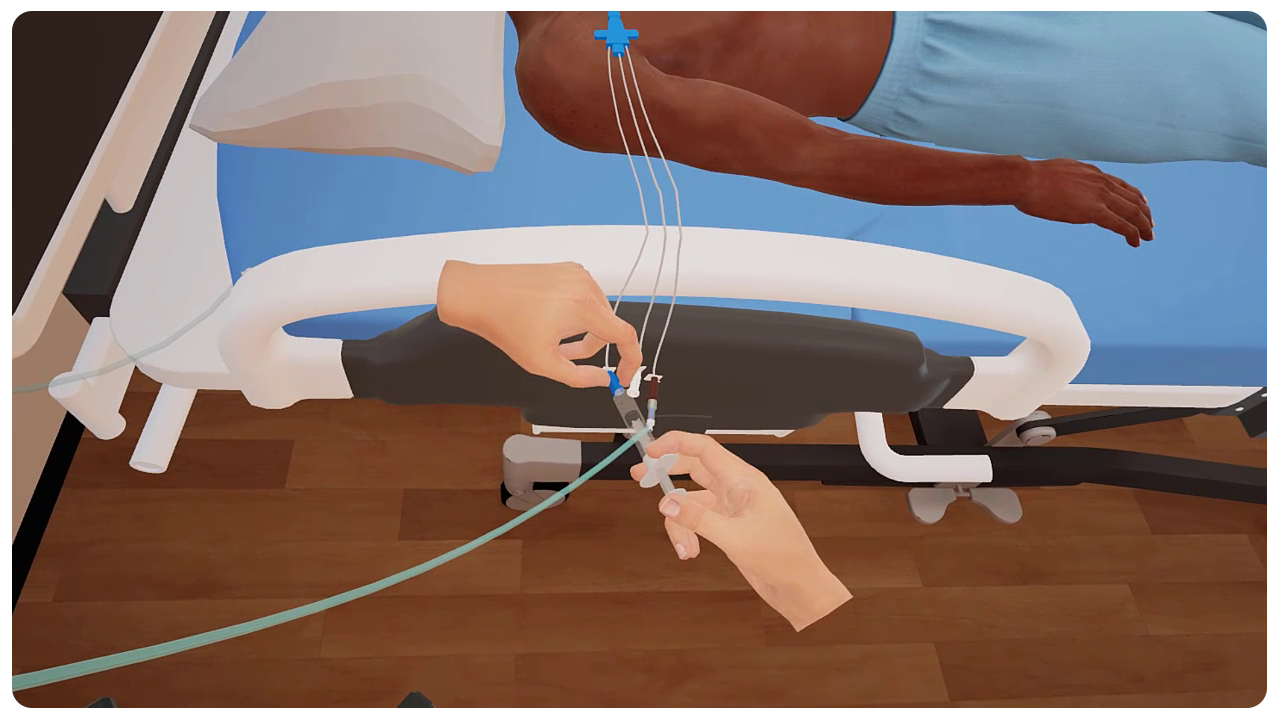
Insertion Site Preparation
As part of the preparations for a CV catheter insertion procedure, nurses also need to prepare the patient. This involves tasks like cleansing the insertion site with chlorohexidine in alcohol solution, placing sterile drapes over the patient, and preparing the ultrasound device. In this module, learners will be provided with adequate affordances to perform all the tasks defined in the procedure. This step-by-step training will ensure that learners complete all the tasks and acquire a thorough knowledge and understanding of the procedure. Appropriate feedback adds on to the effectiveness of the understanding and learning process.
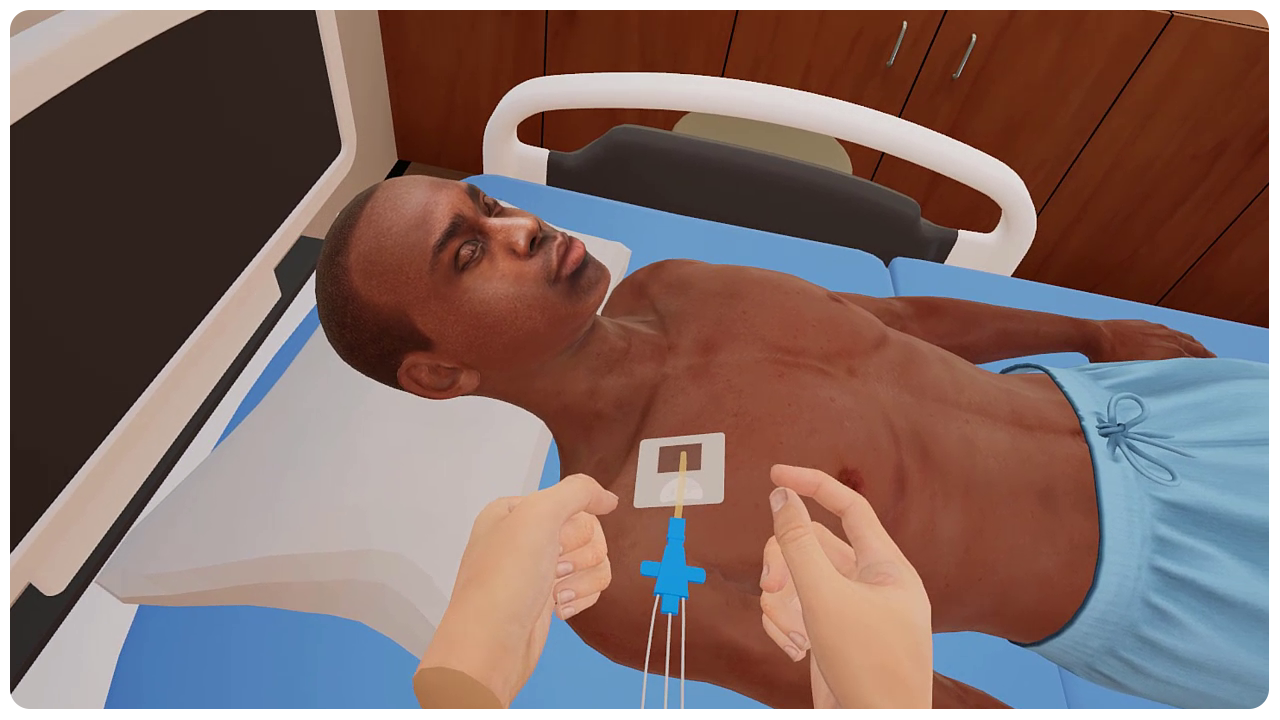
Flushing Lumens and Securing the Catheter
Once the catheter has been inserted, a series of steps need to be performed to erase chances of infections and further the treatment process. Nurses are required to flush lumens with sterile preservative-free sodium chloride solution, assist the practitioner in securing the catheter, connect the catheter to the hemodynamic pressure monitoring system, open the stopcock, apply needleless connectors to unused ports, label all tubing, and observe external centimeter marking of the catheter. Since each task is equally important, the module has been designed to ensure learners perform and complete every step. Appropriate feedback helps rectify mistakes and proceed with complete understanding of the process.






